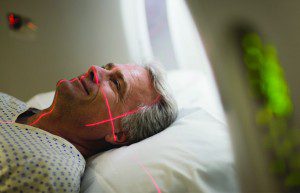 As a patient, you may have concerns about the medical imaging procedures prescribed for you or your loved ones. Questions about the effect of radiation exposure are especially common.
As a patient, you may have concerns about the medical imaging procedures prescribed for you or your loved ones. Questions about the effect of radiation exposure are especially common.
In order to answer the question of whether medical radiation is safe, safety must be defined. What does safe mean? Does it mean:
• there is no risk?
• the risk is very small?
• the benefit exceeds the risk?
If someone tells you the air is safe, does it mean:
• the air is free of pollutants?
• that breathing the air every day is safe?
• that brief exposure to low levels of pollutants is safe, yet constant exposure may not be safe?
Many activities carry some kind of risk. To call something safe usually means that it carries a low risk, not zero risk. Zero risk is almost impossible.
Safety is different for everyone. For example, people with asthma do not tolerate pollution well. What is safe for people without asthma is not necessarily safe for people with asthma.
An action or product is deemed safe as long as the risk associated with it is very low. This is true for medical diagnostic imaging. Even so, only patients who need diagnostic imaging should have imaging exams.
Safety and Radiation
Background radiation naturally exists everywhere in the environment. These levels of radiation are clearly safe. If they were not, life on Earth would not flourish. Yet, we know radiation has the potential to cause cancer.
The degree of safety depends on the level of exposure. Ultra-high levels of radiation (levels far above background radiation or in amounts well in excess of those used in diagnostic imaging) may cause cancer to develop later in life.
Only a small percentage of people who are heavily exposed to radiation develop radiation-induced cancer later in life. This includes people who are:
• exposed to radiation from nuclear weapons.
• involved in radiation accidents.
• treated for an existing cancer.
The potential for radiation-induced cancer depends on the amount of radiation exposure and accumulation of exposure over a long time. Lower exposure levels—background radiation, nuclear medicine exams, computed tomography (CT) scans, or diagnostic x-rays—carry low risks.
Nevertheless, a large volume of circumstantial evidence suggests that diagnostic levels of radiation probably are associated with a low level of risk for inducing disease many years after exposure. Such an event would be very infrequent. Benefits to patients who are sick or injured are so substantial that the radiation risk becomes a minor factor in their healthcare.
Some imaging examinations are used to screen for disease in healthy people. Annual mammograms find breast cancer early, when it can be treated more successfully. Early diagnosis and treatment far outweigh any radiation risk. By this definition, the examination is safe.
Safety is a priority. To be safe, medical practitioners use x-rays only in quantities sufficient for medical care. For example, x-rays for children are scaled down, and multiple examinations are limited to those that are essential. Since babies are small, diagnostic examinations can use far less radiation to obtain necessary pictures.
Benefits of medical imaging are greater than possible risks.
Medical imaging offers tremendous benefits in the care of patients. While there is arguably some potential risk from radiation, this risk–if it exists–is so small that it is difficult to prove. The suspected risk is partly based on projections from the incidence of induced cancer in large populations of people exposed to radiation levels far higher than those encountered in diagnostic imaging. What we do know is that even small potential risks can be further reduced by reducing exposure to radiation.
After 100 years of research, it has been impossible to prove that single, low-dose diagnostic images cause cancer. It is important to use diagnostic exams only when necessary. A necessary exam is safe and may actually save your life.
239-593-4222
www.NaplesImaging.com








